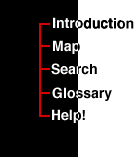

|
 |
Why are bubbles round?The surface tension of a bubble is like the stretch of a balloon. This stretch attempts to shrink the bubble or balloon to a very small size. Think of an uninflated balloon.When there is air trapped inside a bubble or balloon then it can't shrink too much because that will compress the air. So, the effect of the stretch if to make the bubble take a shape that has the smallest area (the amount of surface) for a given volume (the amount of air inside). We can see what sort of shape have a large surface by looking at the surface, the perimeter, of a two dimensional shape:
In this applet the area is fixed (at 1 unit). If you change the shape by dragging points then the perimeter, the distance around the shape, will change. Click on the shape buttons to see which shape has the smallest perimeter. Question 1: Did you find that the circle had the smallest perimeter? Question 2: Can you change the shape of the circle in any way to make the perimeter get smaller? Hopefully you found that the circle has the smallest perimeter and didn't find any way to make the perimeter smaller by changing the shape. Now, imagine that the shape is a cut through our soap bubble. The stretch will make the shape find the shape with the smallest perimeter. In this case it is a circle, just like the sphere or ball shape for the whole soap bubble. So we see that bubbles are round because this is the shape that has the smallest surface area for a particular amount of air trapped inside. How can we see this with maths?Well, it is difficult to prove that the circle has the smallest perimeter for a given area inside. However, it is quite easy to calculate what the perimeter should be for the circle, square and triangle. Remember that in each case the area is 1.0.CircleNow, the area of a circle, A = pi * r2. If we work this backwards with A=1.0, we get:Radius of circle with area 1.0, r = sqrt(1/pi) = 0.564189...
Hence, circumference (perimeter of circle) = 2 * pi * r = 3.5449... SquareThis one is easy! We know the area of a sqaure, A = l2 where l is the length of the sides.So, if we work this backwards: length of side, l = sqrt(A) = sqrt(1.0) = 1.0 in our case. The square has four equal side so the perimeter is simply 4*l = 4.0 TriangleLet us consider the case of an equilateral triangle, ie one with 3 sides each of the same length l.The area of a triangle is given by, A = 0.5 * base * height In our case the base = l, and the height = 0.866 * l. So, A = 0.5 * 0.866 * l2 = 0.433 * l2 Just like for the circle and the square we work this backwards with A = 1.0 and get l = sqrt(1/0.433) = 1.520 The perimeter is simply the length of the three sides, 3*l = 4.56 |
|
|